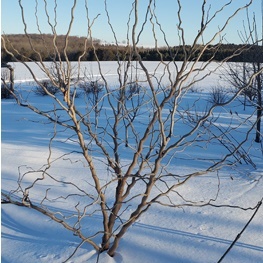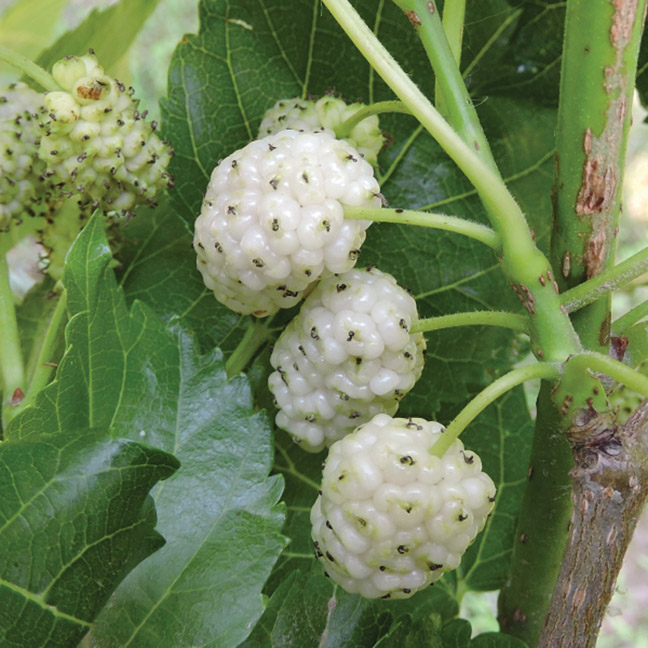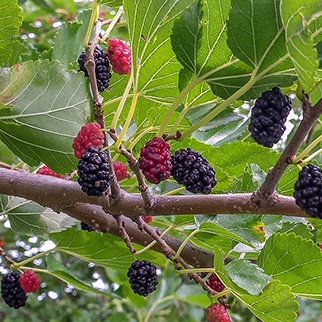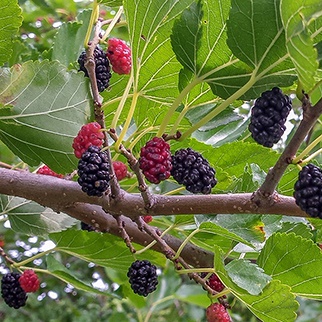Subtotal: $54.95
Due to CFIA regulations we cannot ship plants outside of Canada and cannot ship fruit trees or grape vines to BC.
You are $445.05 away from a 10% discount
Mulberry : TRADER™ 30-60cm (12-24") 1 gallon pot
$54.95
It's finally here! This exciting selection is named for the Trader family who planted the original tree about 1892 at their new homestead near Oriska, North Dakota. Family tradition indicates the mulberry was brought from Germany when William Trader immigrated to the U.S. Today, nearly 130 years later, this same tree is still producing sweet, delicious berries! Fruit size, flavour and ripening pattern are all very similar to Illinois Everbearing, but Trader is substantially more winter hardy. It can be grown either as a single trunk tree or multiple trunk shrub with size regulated by pruning.
SELF FERTILE | ZONE 3/4 | HARVEST: EARLY JULY-EARLY SEPT.
Mulberry Product Overview
Mulberries (Morus spp)
A vigorous, hardy, disease and pest resistant tree, the mulberry was often planted to attract birds keeping them away from other tree crops such as sweet cherries. It really is no wonder the birds love the juicy berries – the pleasing blend of sweetness and tartness makes it one of the best flavours of all fruits!
Now new research is indicating that from a health standpoint, mulberries may actually be the most valuable tree fruit. Dried mulberries and even the leaves are being touted as the latest superfood. The fruit itself has an impressive antioxidant punch, but a compound in the leaves called DNJ is what’s creating excitement. Drinking mulberry leaf tea with your meal helps to control blood sugar and possibly prevent diabetes. The tree is also appreciated for its ornamental appeal, however the dark fruited varieties should be planted away from sidewalks and driveways, as the fallen fruits can cause staining.
Bareroot unless otherwise stated
Only logged in customers who have purchased this product may leave a review.
 Mulberry : CONTORTED BLACK 30-60cm (12-24") grafted
Mulberry : CONTORTED BLACK 30-60cm (12-24") grafted 





Reviews
There are no reviews yet.